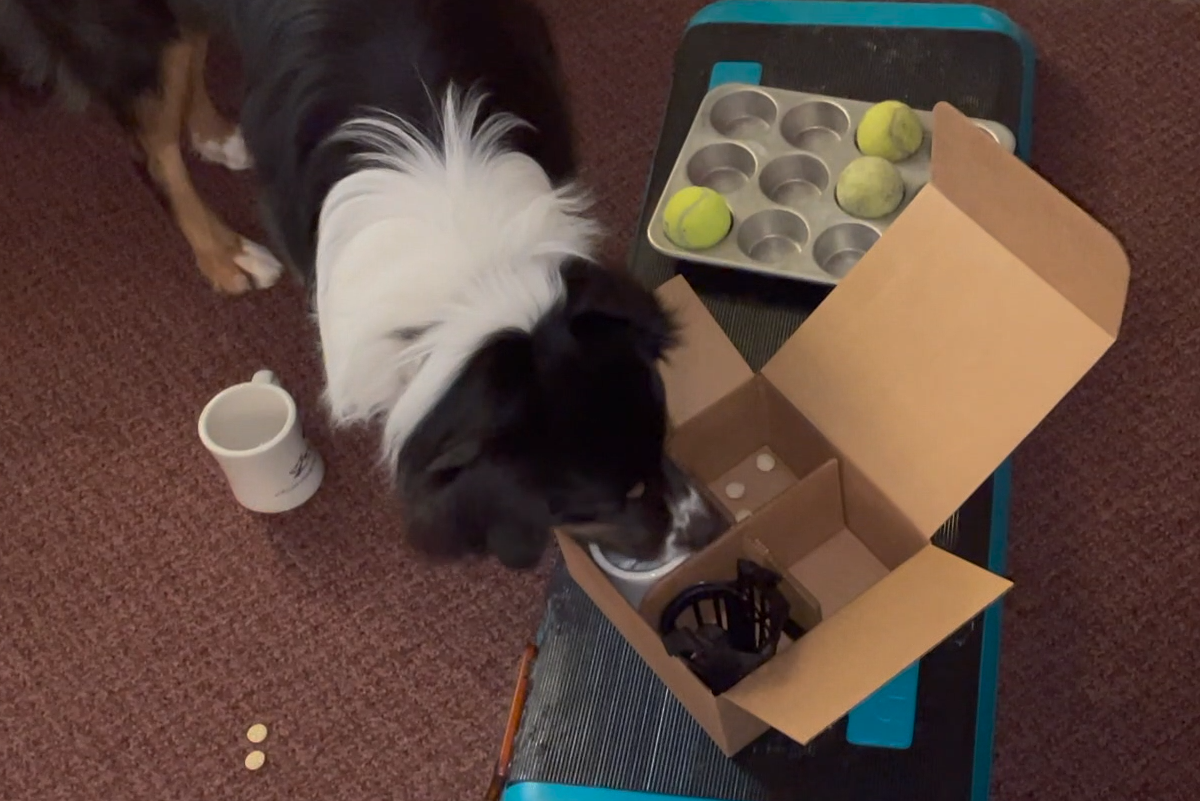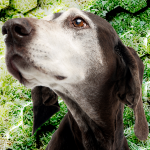Enrichment: The Spice of (Your Dog’s) Life!
Happy National Puzzle Day!
We hope you and your dogs are celebrating. 😊
Let’s explore how wonderful puzzles are for our dogs—in honor of the day—but first a little background.
I remember a day, early in my journey with my wonderful shepherd mix Flim Flam, that we had gone for a long hike. As we returned home I was ready to collapse from the many miles we had covered, whereas Flim wanted to know “What are we going to do now?!”. In that moment I recognized the futility of trying to physically exhaust my athletic dog.
Don’t get me wrong! Exercise is important for the physical and behavioral health of our dogs, but it’s equally important for us to provide them with mental and olfactory exercise. Left to their own devices, our dogs would secure their meals by a combination of hunting and scavenging. They are “wired” to problem solve, to sniff out and find, in order to eat. They may be content to dine on kibble in a bowl, but a meal fed from a bowl can be a missed opportunity. Mealtimes can become a multi-faceted activity for our dogs, and in fact one of the “Five Freedoms“—a globally recognized standard in support of humane care—is the freedom to express normal and natural behavior.
I love to set up exploration courses for my dogs to enjoy while *I* enjoy my second cup of morning coffee. Kibble sprinkled in a scrunched up towel or bucket of balls can turn breakfast into an experience. Does your dog get crazy during the 5 to 7 p.m. “Witching Hour”? Our crepuscular dogs can benefit from some enhanced feeding at such times.
Once your dog is happily foraging, add to the sensory fun by bringing out a few different surfaces to traverse, such as an exercise stepper, a nubby rug, a yoga mat, or even some newspapers or packing materials.
We can learn a lot about our dogs by watching them as they explore. Do they feel confident poking their nose in a container to get kibble? Is their back end moving easily and negotiating the various surfaces with facility? Does something in your exploration area particularly capture their interest?
Here are video snippets of Fleet and Cookie, exploring “Freework” courses. What do you see? Post your thoughts on our Facebook page.
These Freework courses are like global puzzles. Your dog is in an environment which encourages the problem-solving you see in the videos. It’s important to introduce these activities without putting pressure on our dogs to accomplish anything specific, but rather let them go at their own pace, being the dogs they are.
“What about ‘Regular’ Puzzles?”
I’m glad you asked me that! There are numerous puzzles and enrichment feeders being made for dogs these days, and some of them are real standouts.
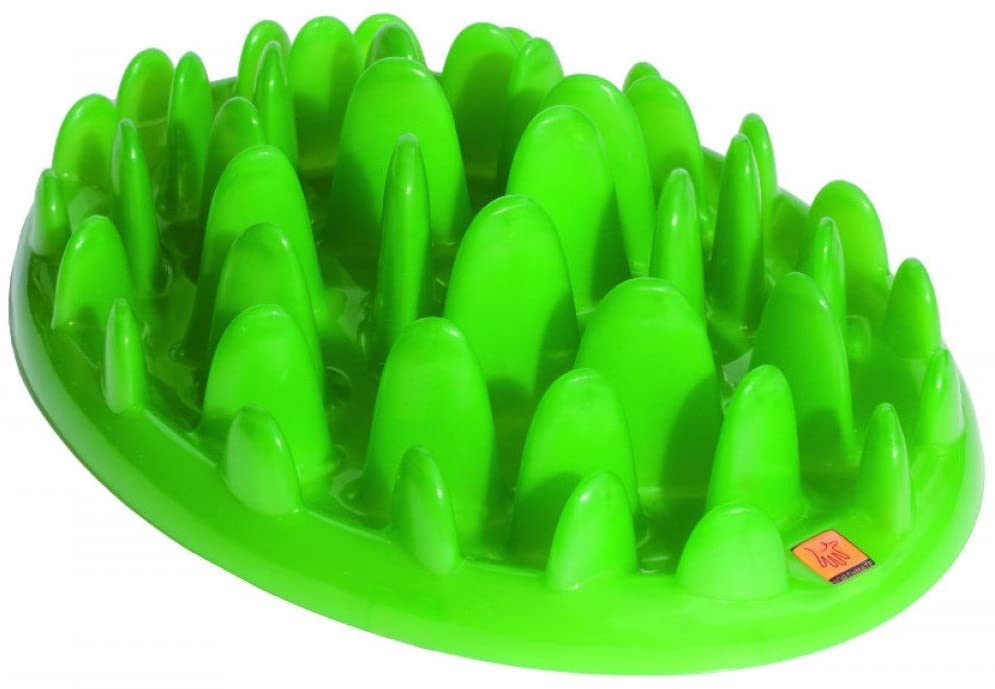 Green Feeders
Green Feeders
This is the closest my dogs come to eating out of a dish. With the look of oversized blades of grass, this feeder encourages dogs to take their time eating, and I’ve observed more sniffing and tasting during meals. The Green Feeder can go through the dishwasher on the top rack.
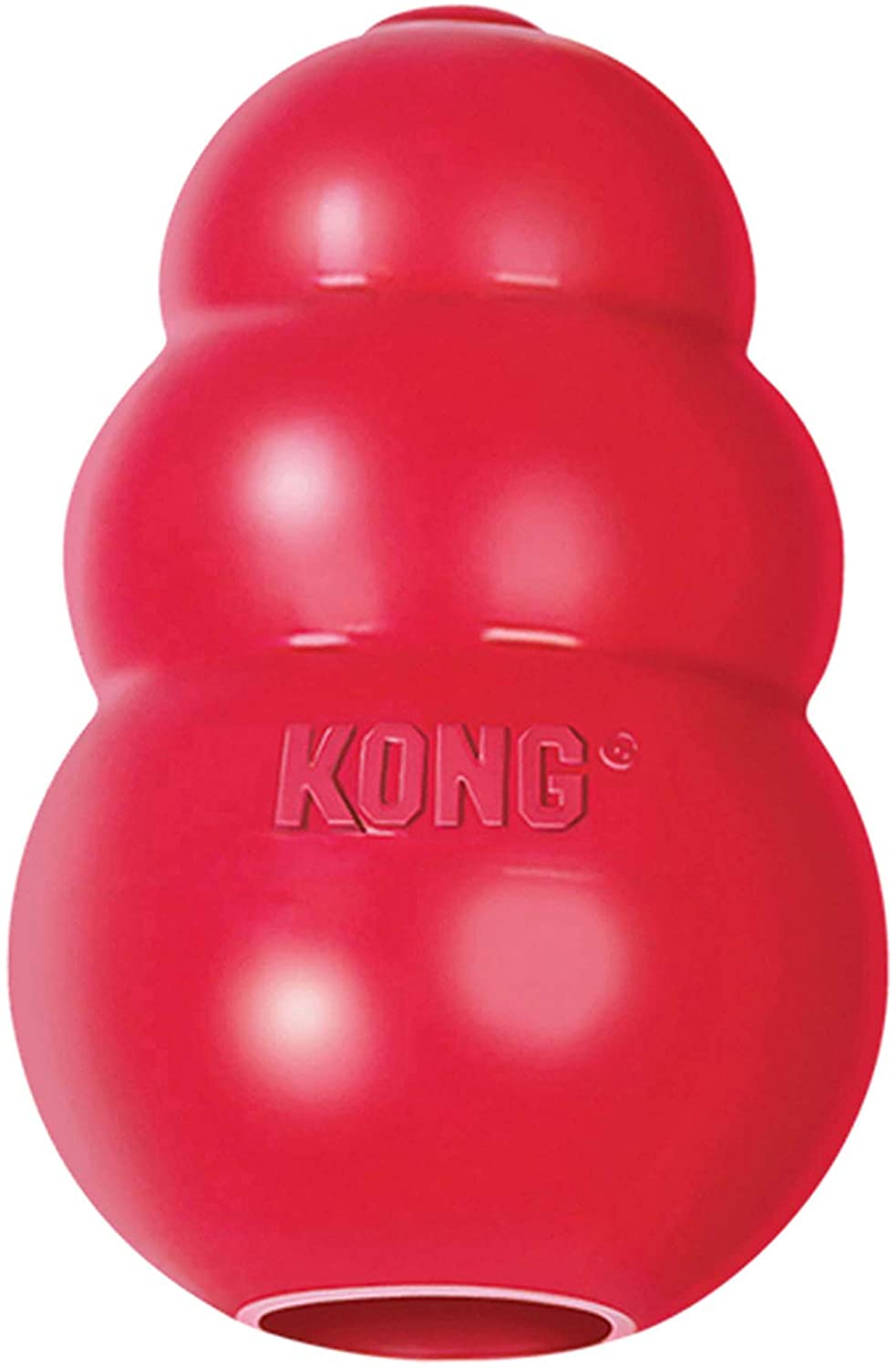 Kongs
Kongs
The classic food toy, the pear-shaped Kong has a great bounce, can be stuffed with tasty food, and stored in the freezer. I find it simple to stuff them with a combination of my dogs’ moist and dry food, freeze for a bit, and put a dab of peanut butter or cream cheese on the end, to stimulate their interest, once I’ve pulled it from the freezer. I send my Kongs through the dishwasher on the top rack.
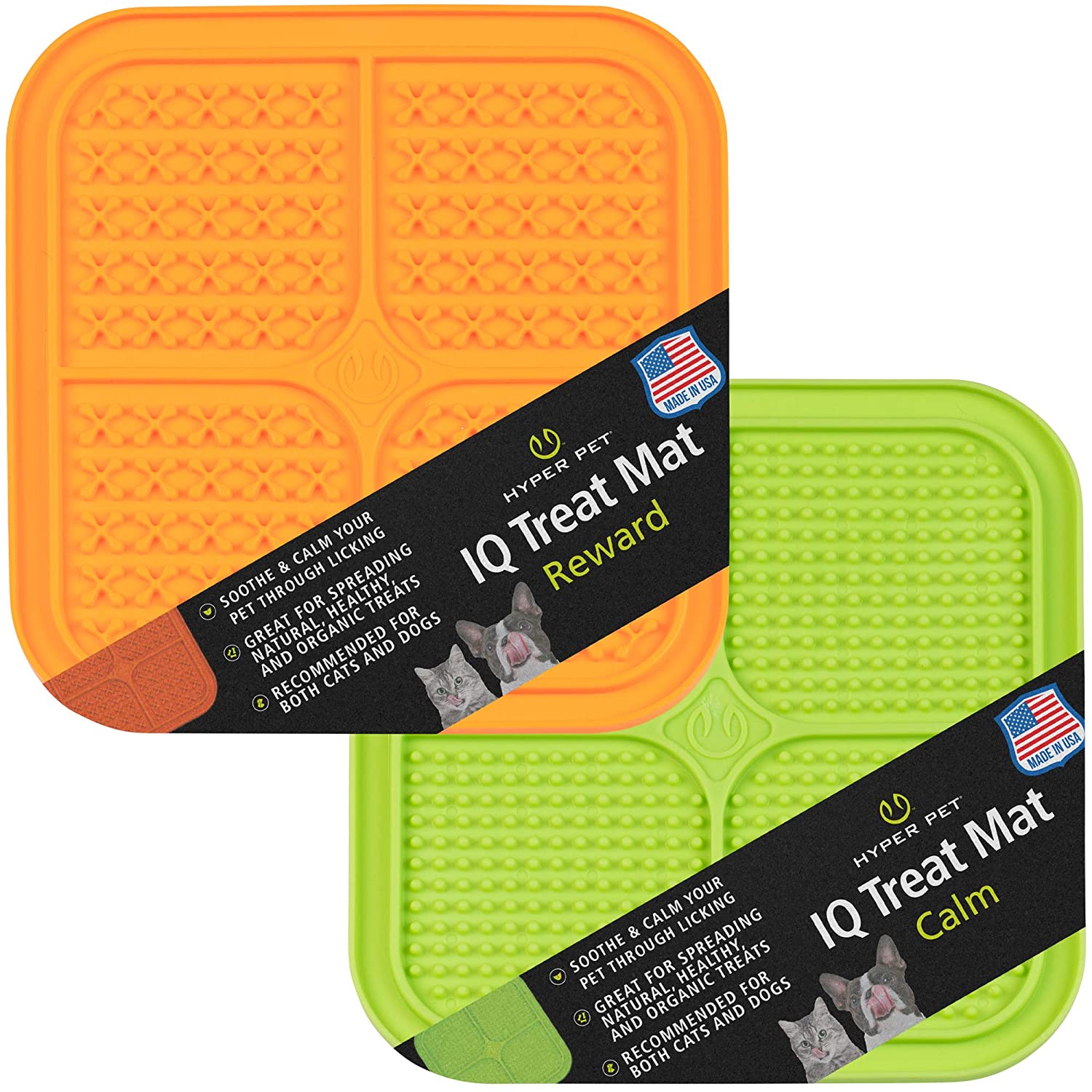 Licki Mats
Licki Mats
The more I use these, the more I like them. Smear a bit of your dog’s moist food on a mat, or some peanut butter or cream cheese, and watch them savor the flavor. Licking is a calming activity for dogs, which is a great benefit. The Licki Mat people have created a variation which is a particular favorite in my house:
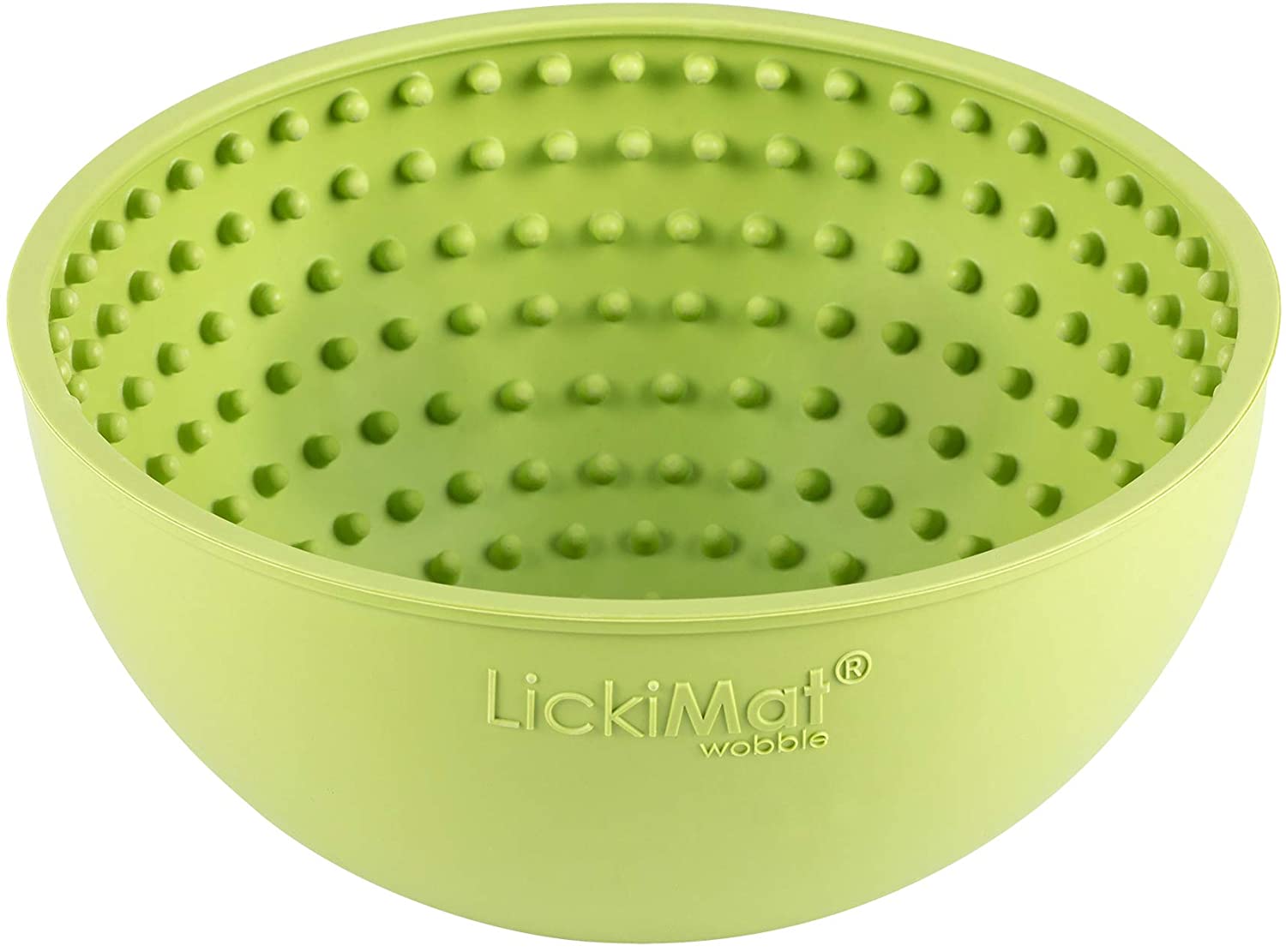 Licki Mat “Wobble”
Licki Mat “Wobble”
If you watch the first video you’ll see my English Shepherd, Fleetwood, spending a lot of time with his Wobble. It brings together the interest of a bowl and the soothing aspect of the mat.
Nina Ottosson Puzzles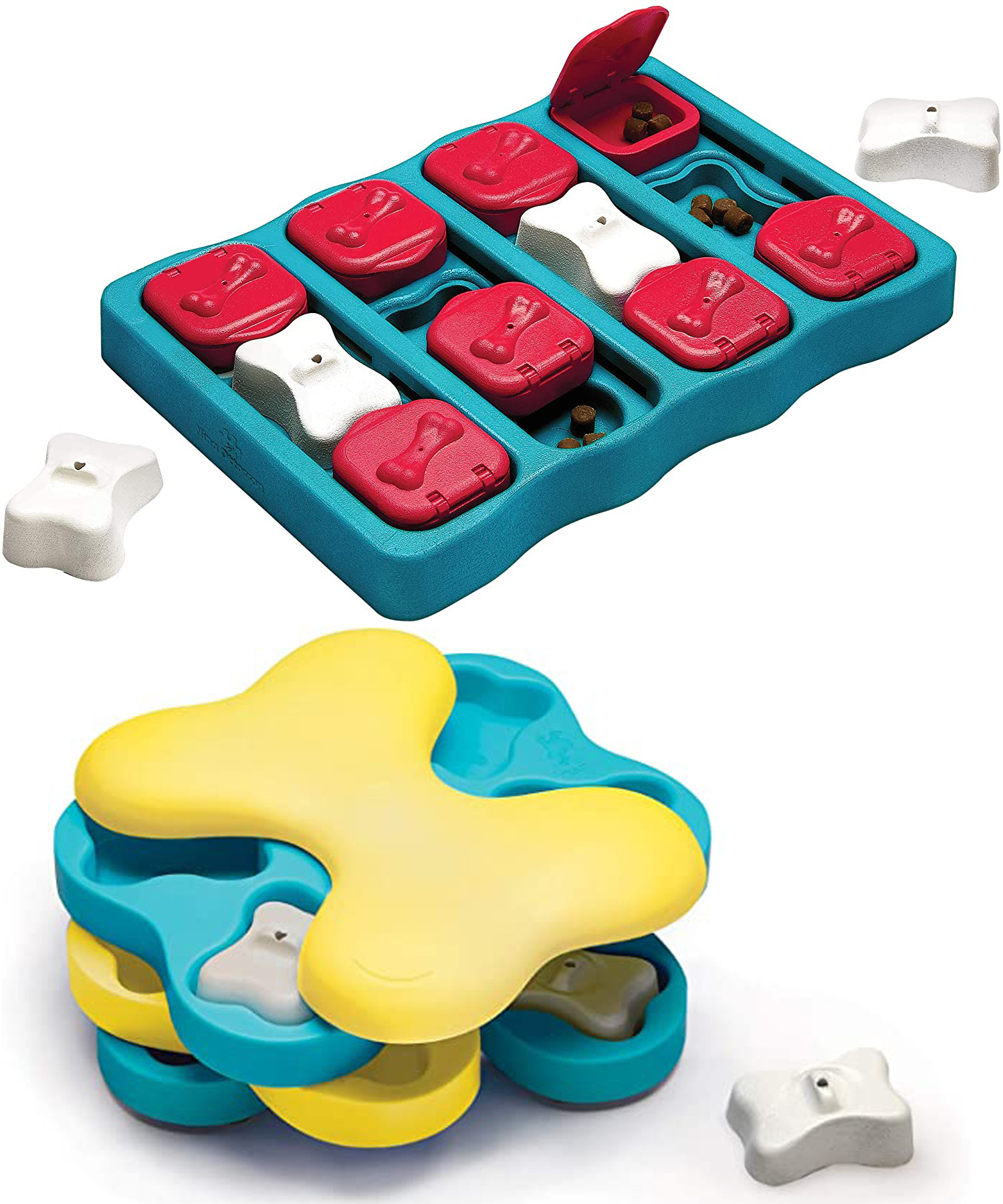
Ottosson started designing puzzle toys for dogs in 1990, after her children were born. She didn’t have the same amount of time to devote to training with her dogs, but wanted their intellectual needs to be met. We at Joyful Dog love her toys, and here are two of our favorites:
The Brick Puzzle
With doors that lift, hidden compartments, and lids to remove, this puzzle is simple, but has numerous ways to adjust the challenge to your dog’s level of success.
The Tornado
Layers that turn to reveal treats. “Bones” are added or removed to adjust the difficulty level.
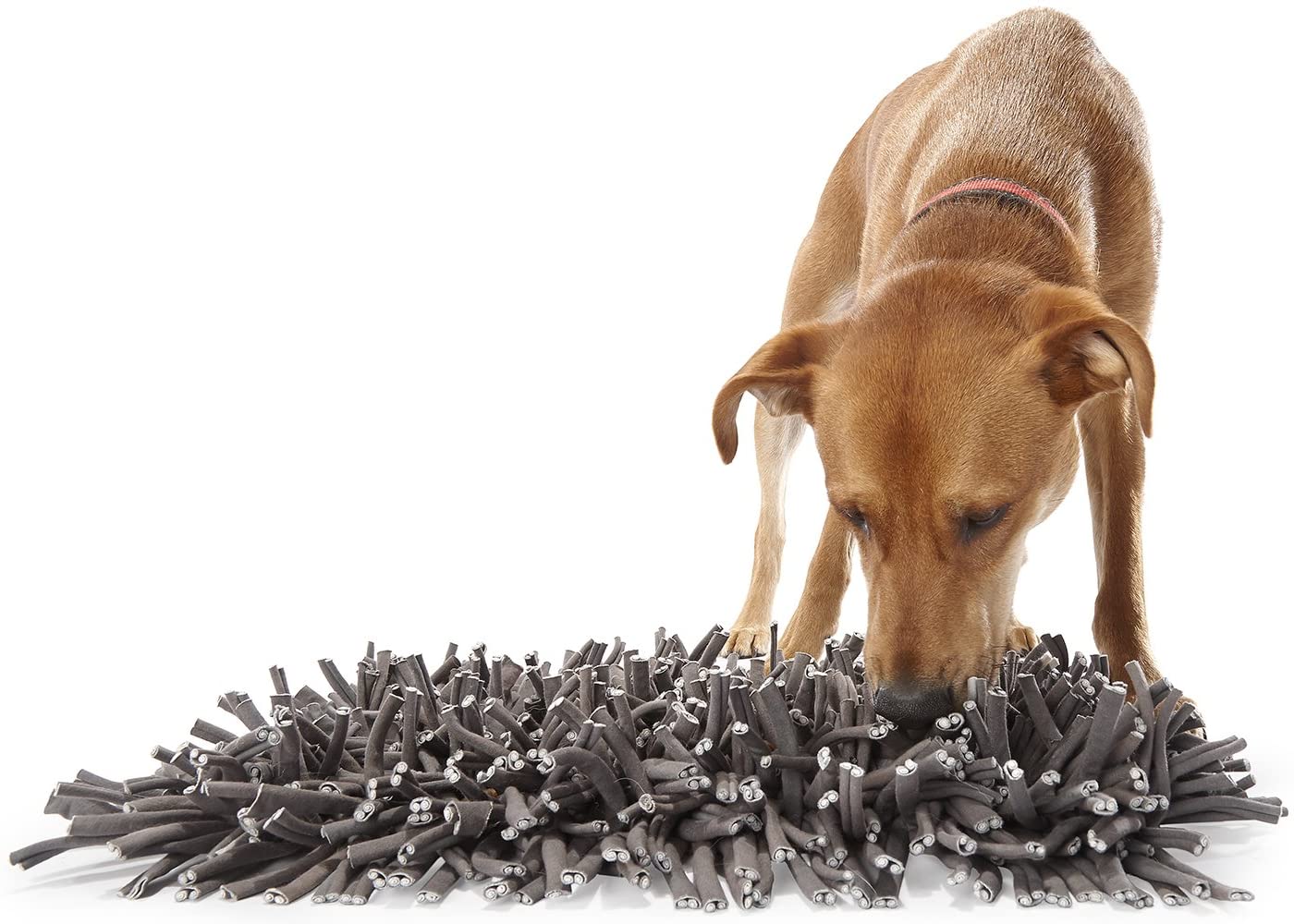 Snuffle Mats
Snuffle Mats
These wonderful foraging mats come in an ever-increasing array of styles. You can find them on Etsy, Amazon, or Chewy, and a quick Google search will yield a number of patterns and instructions to make them yourself if you’re feeling crafty. My own dogs seem to find snuffling to be particularly calming.
 Starmark Tetraflex
Starmark Tetraflex
This treat-dispensing ball and the similar Omega Tricky Treat ball are made of a rubbery vinyl or plastic. You load the ball with treats or kibble so that when your dog rolls the ball, treats come out a hole. I add a second hole using a sharp knife before introducing one of these “kibble balls” to a dog for the first time, so that they experience reinforcement more quickly when starting.
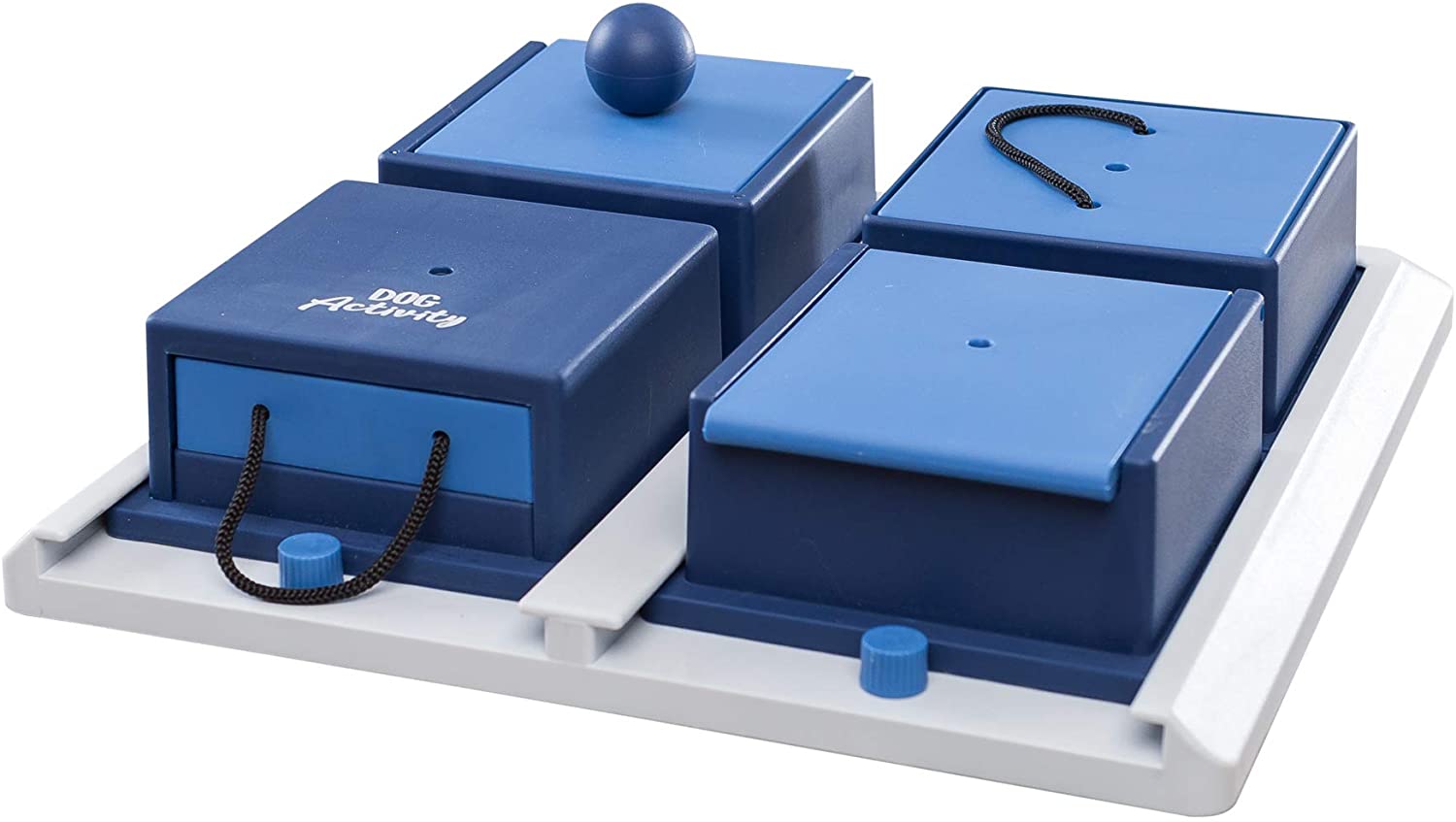 Trixie Poker Boxes
Trixie Poker Boxes
This puzzle set is simple, but engaging. We find them handy for building self-control and adding value to waiting for a food reward in some of our classes. Use them singly, or all together, to create a fun experience for your dog. I usually hand-wash our Poker Boxes, but have been successful washing them in the dishwasher, on the top rack, as well.
ADDITIONAL RESOURCES
I think that we’ve only just begun to see the power that Freework—that facilitating natural behavior—has for supporting behavioral health in our dogs.
Animal Centred Education in the UK has taken the lead with this work, building it into a “structured method of educating and supporting dogs … providing a safe and rewarding foundation on which further learning can be built.” “ACE” offers courses both online and in person in Bath, in the UK.
Tellington TTouch groundwork was a forerunner to the development of freework through its patterned movement and “Playground of Higher Learning”, and freework is often included in TTouch groundwork.
Canine Enrichment for the Real World: Making It a Part of Your Dog’s Daily Life, is (to quote reviewer Patricia McConnell) “a deep dive into what dogs really need and how we can provide it”. Well-organized and indexed, it might speak to your inner behavior geek, as well as providing practical information for enriching your dog’s world.

